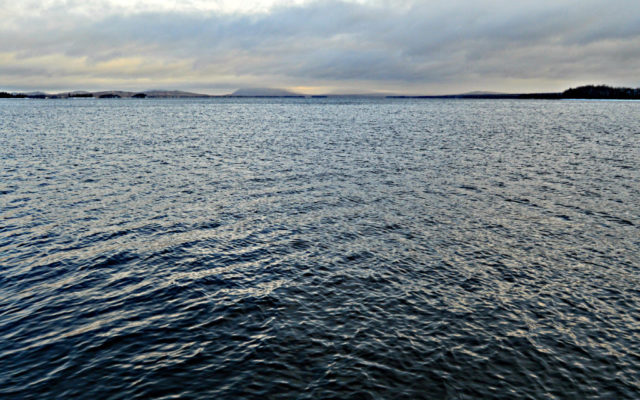
Moosehead Lake Region fishing report
By Moosehead Lake Region Regional Fisheries Supervisor Tim Obrey
The fishing in Maine’s largest lake has been pretty good in 2022. We spend the vast majority of our time on Moosehead Lake collecting data to assess the sport fishery. We understand the importance of recreational fishing in the area. Fishing is not only fun and a tradition for many of our residents and visitors, but it is extremely important to our local economy. Everyone wants to see successful fishery management on the big lake.
A fisheries management plan was developed for Moosehead Lake in the mid-1990s. The plan was well thought out and has been very useful for us to track the changes in the fishery. It contains goals and objectives for each gamefish species. Each December and May, we get together with the Moosehead Lake Focus Group, a stakeholder’s group of local anglers, to go over the plan and any related work completed since the last meeting.
I won’t bore you with all the numbers, but I can give an overview. We routinely monitor catch and growth rates (fatness) of each species. We took a little dip in our growth rates a few years ago as we documented a poor year class of smelt, the main forage fish.
In 2022, we saw a small rebound in our growth as a stronger group of smelt now makes its way into the fishery. Catch rates for salmon continue to improve, both summer and winter. We’ve really got a good thing going with salmon in the lake right now. Many times, we are asked about the rationale for the differing winter versus summer regulations on salmon.
In the 1990s, winter anglers were harvesting salmon at a very high rate and the spring salmon fishing suffered. Stricter regulations on winter salmon fishing were implemented to “push” some of the winter harvest back to the summer season. That strategy has really paid off. We see some terrific ice-out fishing, especially in the Rockwood/Moose River area as the smelt are running up the Moose River. We do hear a little grumbling from anglers on the ice, but typically the lake trout and brook trout fishing is better in the winter.
The proportion of wild salmon in the fishery is a little surprising. The vast majority of salmon we see in our travels on the lake are home-grown. Our work monitoring the fishway at the East Outlet shows that we are getting more salmon production from the river since the construction of the spawning channel.
Of course, we carefully monitor the lake trout population. Long-time Moosehead anglers know that the over-abundance of lake trout in the 1990s caused all kinds of problems with the fishery. We feel like we’ve got a good handle on the lake trout population now.
At the same time, we are still encouraging anglers to take home their limit of lake trout under 18 inches. When we had the no size or bag limit on lake trout under 18 inches, anglers were keeping around 85-90 percent of these fish. This really helped to quickly thin the population. Since we changed the regulation to a 5-fish limit, anglers are now only harvesting around 40 percent of the fish that they could legally take home. It’s important to keep harvesting these smaller fish, so please take a few more home for the neighbors.
The only storm clouds on the horizon are from our brook trout catch. Recently, we’ve seen a big influx of trophy brook trout in the lake, and they are still around. Last fall we spent a day checking the spawning sites on the lake and found plenty of these big trout milling around. We feel good about the extra protective measures implemented to protect these prized fish. We still routinely see photos from anglers catching these fish both summer and winter. However, we have seen a drop in the overall catch of brook trout of all sizes in the lake over the past several years.
We’ve seen this before on Moosehead. There are always peaks and valleys in abundance and now we are in a valley. Hopefully, we’ll see a rebound in the coming year or two. We are concerned with some of the changes in the fishery that we are seeing in places like Spencer Bay. The numbers of smallmouth bass have recently exploded in this important brook trout area. I’ll have more on that in my next fishing report.